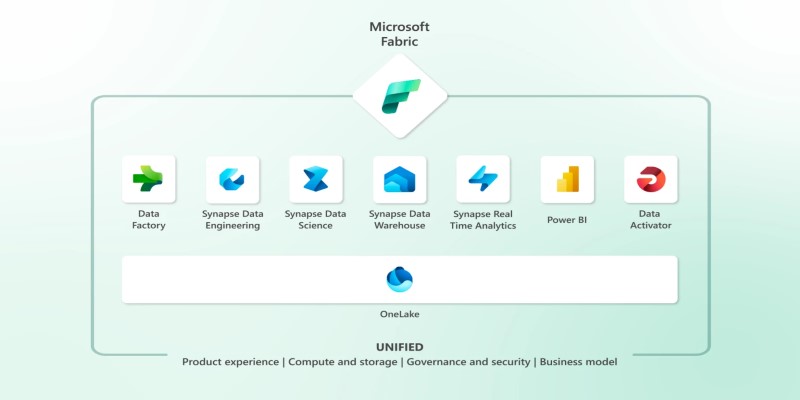Advertisement
Meta's long-term vision relies on more than just advancements in virtual reality and artificial intelligence. Its success hinges on scalable infrastructure that supports data center solutions tailored for AI and the Metaverse. A strong foundation is essential as the company moves toward delivering immersive digital experiences. Meta's AI systems require modern hardware, robust networks, and vast computational capacity. These advanced capabilities cannot function effectively without a reliable and resilient infrastructure.
Meta's ongoing investments in data centers, AI processors, and global connectivity underscore its core strategy. The company recognizes smart applications and immersive experiences demand exceptional reliability and performance. Meta's infrastructure focus gives it a strategic edge, even as other tech giants pursue the same frontier. Robust system architecture enables scalability, speed, and seamless global reach across platforms and devices.

Advanced AI requires immense processing power. Meta funds unique silicon chips for high-performance computing. Recommendation engines, natural language processing systems, and machine learning models run on these CPUs. Meta-artificial intelligence systems depend on low latency and quick data processing. Off-the-shelf solutions no longer meet rising demands. Custom-built CPUs maximize performance for particular AI tasks. It also gives Meta a competitive edge in software speed and efficiency. Custom hardware lets platforms be more tightly integrated.
Meta blends cutting-edge energy-efficient operations with technology and superior cooling. These developments advance the Metaverse and artificial intelligence. Real-time user interactions and virtual environments call for smooth data flows. Data centers tuned for tasks requiring lots of computation improve this experience. Infrastructure turns into the unseen motor driving futuristic possibilities. Meta is committed to creating systems supporting billions of people without stopping. Faster product rolls and more consistent experiences depend on better infrastructure. Platforms for future-ready computing allow Meta the advantage in creativity.
The foundation of Meta's infrastructure approach is its data centers. These sites provide dependability, speed, and energy economy. Thousands of servers housed in each center are committed to virtual environments and AI tasks. Meta-artificial intelligence systems continuously analyze millions of data points. The Metaverse also demands low-latency networking and real-time rendering, which depend on scalable AI infrastructure to ensure seamless operations. Meta designs emphasize the easy handling of future technologies. That covers sophisticated cooling as well as the integration of renewable energies.
Growing its digital footprint, the organization prioritizes sustainability. Modular designs enable quick development and are free from large-scale rebuilding. Owning its infrastructure helps Meta reduce outside reliance. Complete control enhances data security and performance. The business is free to innovate and can rapidly scale activities. Data center solutions equipped for the Metaverse enable people to experience immersion. Constant improvements guarantee that the hardware meets upcoming needs. Meta's data center network allows digital aspirations spanning devices and continents to be realized.
Meta develops its artificial intelligence chips to manage difficult jobs more quickly. These processors reduce energy utilization while increasing AI processing. Meta's scale needs are not met by standard hardware. Custom processors let Meta customize performance for internal systems. Recommendation engines, language models, and metaverse tools all gain from this. Chips with MTIA are made to optimize data flow. They manage rather highly efficient huge language models. Custom silicon allows smart content creation and real-time data inference.
These chips let meta-artificial intelligence systems enhance personalization and content moderation. They accelerate model building and research. Custom hardware ensures consistent Meta's platform performance. Faster product iterations and improved user safety made possible by these chips also help More capable AI models lower environmental effects. Meta ensures flawless improvements by managing the design process and supply chain. Chip development investment enhances Meta's infrastructure and long-term goal for digital leadership.
Connectivity links everything between hardware, artificial intelligence systems, and end-user experiences. Meta develops worldwide fiber optic networks to support seamless data transmission. For the Metaverse, these networks enable low-latency communication. Virtual environments in real-time necessitate instantaneous responsiveness. Strong backend connectivity will help support scalable infrastructure for artificial intelligence. Meta invests in edge sites and underwater cables to enhance regional access. High-speed networks lower lag in live interactions. Low latency makes meetings, gaming, and virtual worlds natural.
Reliable connectivity ensures that AI models operate on all platforms with good performance. Meta-artificial intelligence systems sift real-time signals from billions of consumers. Data flows ought to be flawless and continuous. Good networking enables this degree of activity free from performance declines. Working with telecom companies increases reach into far-off areas. These initiatives improve Meta's capacity on clouds as well. Improved connectivity ensures that infrastructure can scale with increasing demand and enable future immersive technologies effectively.
Scalability lets Meta develop quickly without compromising performance. Infrastructure needs to expand easily as consumers rise. Meta's modular approach enables this. Solutions ready for the Metaverse enable quick implementation. Scales of computation and storage enable artificial intelligence systems. Meta's algorithms automatically adjust when AI training demands surge. It keeps outages and slowdowns away. Mega artificial intelligence systems run on a worldwide scale. Every function has to be instantaneous, independent of traffic. Infrastructure must be able to meet surge or launch peak needs. Flexible building allows improvements to be less disruptive.
Systems scale depending on necessity both horizontally and vertically. The backend used on sites like Facebook, Instagram, and Horizon Worlds is the same. Unified infrastructure reduces operational complexity. Resources move throughout services to maximize usage. Regular improvements preserve top-notional performance—meta plans for the future instead of only current workloads. Scalability ensures seamless user experiences even in expansion stages. It maintains Meta's strength and competitiveness in quickly changing digital surroundings.

Central to Meta's infrastructure plan is sustainable practices. These days, data centers run on renewable energy. AI chips produce greater performance with less power. Furthermore, being environmentally sensitive is a scalable infrastructure for artificial intelligence. Meta wants net-zero emissions all through operations. New designs cut waste and help cool it. The development of artificial intelligence hardware emphasizes power-efficient architecture. These decisions help to lower environmental impact and running expenses. Ecological infrastructure creates long-term resilience.
Constant computation is the foundation of meta-artificial intelligence systems. Greener energy sources help to make development more conscientious. The Metaverse begs questions regarding carbon footprint as well. Meta answers this by blending sustainability with invention. Data centers will provide clean energy as a priority in the future. Modular designs let one rapidly adapt to new energy technologies—meta-analyses of emissions and performance at all levels. Openness and returning to these measures help to establish confidence. Sustainability and invention go hand in hand these days. This concentration ensures Meta's leadership in tech infrastructure development is ethical.
Meta's future is defined by its commitment to scalable AI infrastructure and Metaverse-ready data center solutions. A strong digital foundation includes advanced chips, sustainable systems, and fast networks. These components propel Meta artificial intelligence systems and immersive technologies on many platforms. Meta's infrastructure has to stay quick, dependable, and flexible as digital experiences get more complicated. Faster product delivery and sustained user engagement depend on a solid backend. Meta creates not only tools but also the systems driving tomorrow. Smart infrastructure decisions ensure Meta leads in artificial intelligence, connectivity, and the virtual reality sprint.
Advertisement

Discover how to generate enchanting Ghibli-style images using ChatGPT and AI tools, regardless of your artistic abilities

RAG combines search and language generation in a single framework. Learn how it works, why it matters, and where it’s being used in real-world applications

Gemma 3 mirrors DSLMs in offering higher value than LLMs by being faster, smaller, and more deployment-ready

What if you could deploy dozens of LoRA models with just one endpoint? See how TGI Multi-LoRA lets you load up to 30 LoRA adapters with a single base model

Explore Microsoft Fabric, a unified platform that connects Power BI, Synapse, Data Factory, and more into one seamless data analytics environment for teams and businesses

Reddit's new data pricing impacts AI training, developers, and moderators, raising concerns over access, trust, and openness

How Python handles names with precision using namespaces. This guide breaks down what namespaces in Python are, how they work, and how they relate to scope

NPC-Playground is a 3D experience that lets you engage with LLM-powered NPCs in real-time conversations. See how interactive AI characters are changing virtual worlds

How DeepSeek LLM: China’s Latest Language Model brings strong bilingual fluency and code generation, with an open-source release designed for practical use and long-context tasks

What happens when you stop relying on majority vote and start using smarter label aggregation? See how Distilabel and Argilla helped build a chatbot with clearer, more consistent labels and faster feedback cycles

Meta's scalable infrastructure, custom AI chips, and global networks drive innovation in AI and immersive metaverse experiences

How to fine-tune a Tiny-Llama model using Unsloth in this comprehensive guide. Explore step-by-step instructions on setting up your environment, preparing datasets, and optimizing your AI model for specific tasks